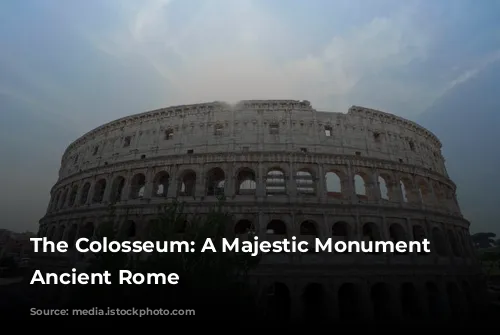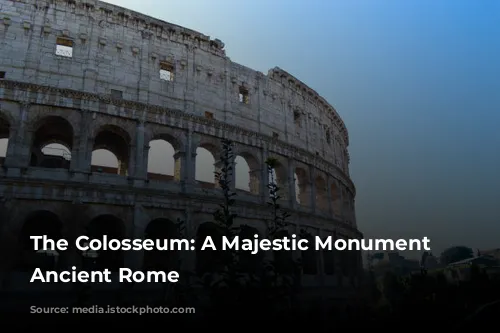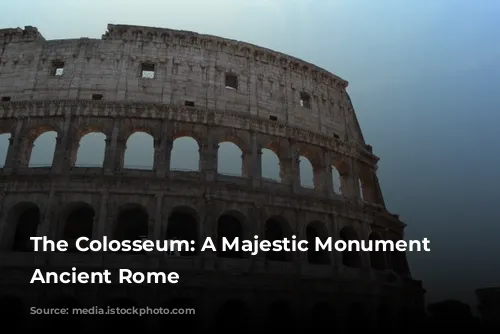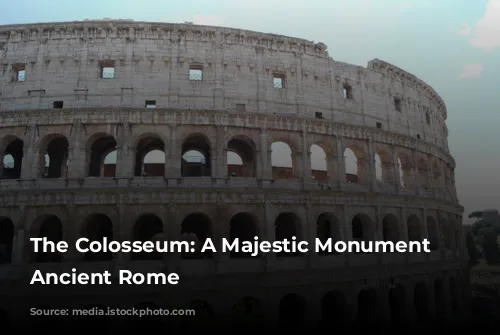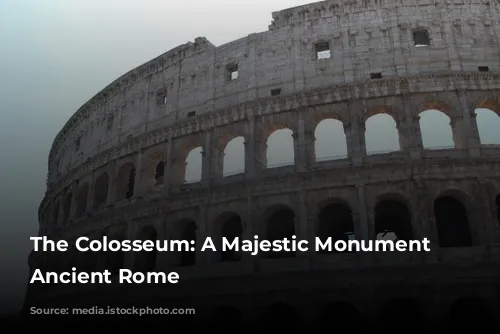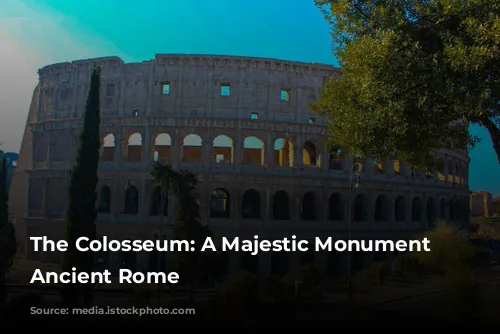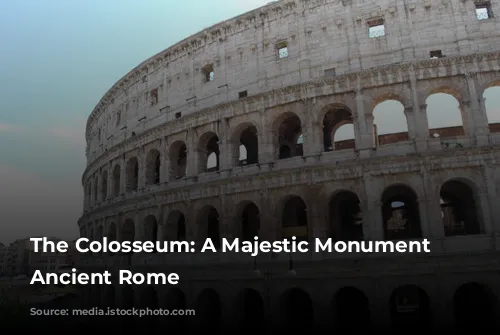The Colosseum, a true titan of Roman architecture, is a testament to the grandeur of the Roman Empire. Known as the Flavian Amphitheatre, this massive structure stands as a symbol of Rome’s power and splendor.
Begun under the reign of Emperor Vespasian of the Flavian dynasty, the Colosseum was completed by his son, Emperor Titus, in 80 AD. Its inauguration was a spectacle to behold, lasting a staggering one hundred days. The opening ceremonies showcased breathtaking displays of combat, exotic animal hunts, and even elaborate naumachias – naval battles recreated in the arena, filled with water. Historians estimate that thousands of animals were slain during these celebrations.
But why is this imposing monument known as the Colosseum?
The name originates from the “Colossus,” a colossal statue of Emperor Nero, standing 35 meters tall, which stood near the amphitheatre. Although the statue has long since vanished, the name stuck, becoming synonymous with this awe-inspiring structure.
An Architectural Marvel
The Colosseum is an architectural feat, its immense scale and intricate design a reflection of Roman engineering prowess. Its elliptical shape allowed for maximum seating capacity, and its four levels boasted a total of 80 arches on the first three floors. These arches were adorned with massive statues, adding to the amphitheatre’s magnificence.
The Romans were masters of the arch, a construction technique that allowed them to distribute the weight of heavy structures effectively. The arch played a crucial role in their architecture, evident in structures like Roman aqueducts. The Colosseum itself can be seen as a series of aqueducts stacked upon one another.
Imagine the Colosseum in its pristine glory, its exterior gleaming with white travertine stone slabs. It is remarkable to consider that this imposing structure was built in under a decade, a testament to Roman ingenuity and organizational skills.
A Glimpse into Roman Life
The Colosseum wasn’t just a building, it was a stage for life in ancient Rome. It could hold up to seventy thousand spectators, each with a designated seat based on their social standing.
Similar to modern stadiums, the Colosseum offered its audience protection from the sun with its ingenious roof, known as the “Velarium.” This massive linen tarpaulin, operated by a team of one hundred sailors, provided shade for the throngs of spectators.
As we enter the Colosseum today, we are confronted with the arena itself, a space where history unfolded before our eyes. The arena floor, once made of brick and wood, has long vanished. Instead, we see the underground cellars where equipment was stored for the elaborate shows and games.
The Colosseum hosted a variety of spectacles, from gladiatorial combats to animal hunts, all designed to entertain and amaze the Roman public. These events weren’t just about entertainment; they were a powerful tool for connecting citizens to their leaders, providing a shared experience that reinforced the Roman sense of unity.
The Gladiators: Heroes of the Arena
The gladiators were the stars of the Colosseum, their battles a thrilling highlight of each event. The word “gladiator” itself originates from “gladius,” the short sword wielded by Roman legionaries.
Contrary to popular belief, gladiators were not simply forced to fight. They often chose their fate, opting to fight in the arena for a limited period of time in exchange for freedom and a share of the spoils. Others were attracted by the fame and fortune that awaited them, making the profession a coveted one.
The gladiatorial combats were meticulously choreographed, featuring different types of fighters with unique weapons and fighting styles. The audience, eager for thrills and spectacle, cheered for their favorites, creating a frenzied atmosphere.
The fate of the defeated gladiator was in the hands of the emperor, who decided whether to grant them mercy or condemn them to death. The roar of the crowd determined the gladiator’s fate, their thumbs up signifying life, their thumbs down signifying death.
A Legacy That Endures
The Colosseum’s legacy is one of grandeur and spectacle, but also one of brutality. The Roman fascination with violence was a stark reality of ancient life. The Colosseum is a reminder of this darker side of Roman culture.
As the Roman Empire declined, so too did the Colosseum, its grandeur fading into ruin. Over the centuries, it served various purposes, from a quarry to a source of building materials. But its magnificence endured, attracting visitors from all corners of the world.
Today, the Colosseum is a symbol of Rome’s enduring legacy, a powerful reminder of a civilization that once ruled the world. It invites us to step back in time and witness the spectacle of ancient Rome, a testament to human creativity, ambition, and the enduring power of the human spirit.
